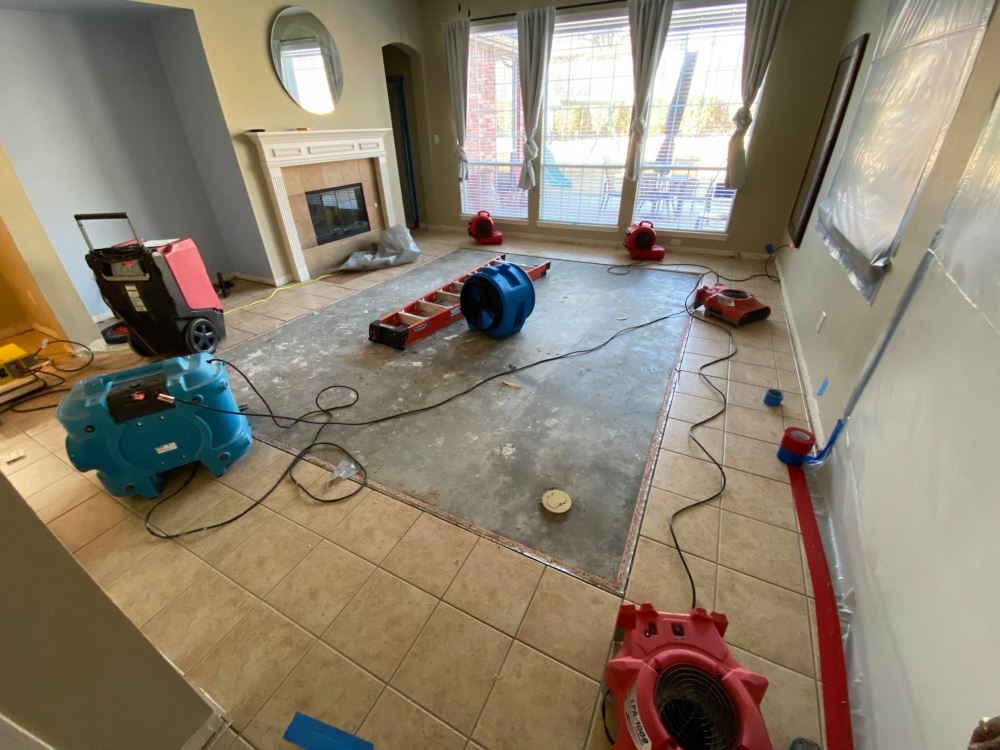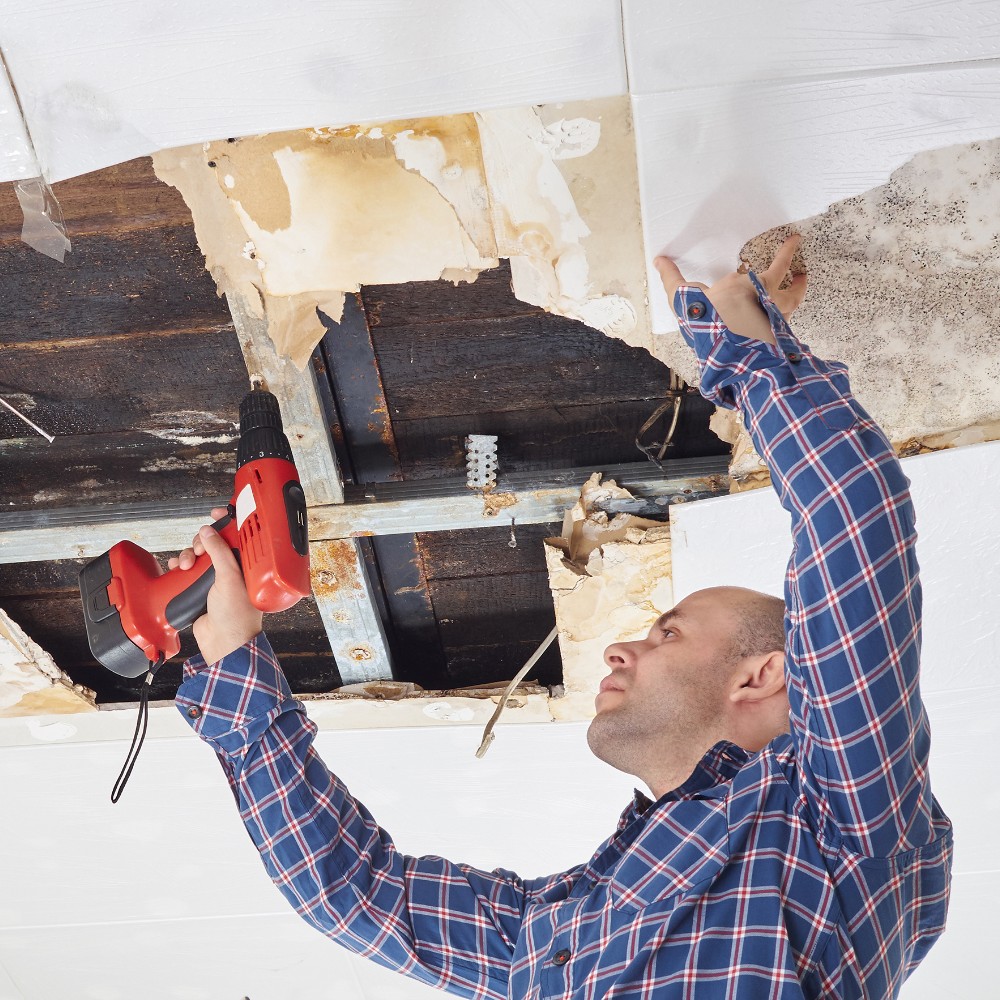How to compare Flood Cleanup Services companies before hiring
Wiki Article
Water Damage Restoration 101: Recognizing the Process and Cost
Water damage can strike suddenly, leaving homeowners in a state of confusion. Recognizing the restoration process is necessary for effective recovery. From examining the damage to picking the appropriate company, each step influences the general outcome and cost. Elements such as the sort of water damage and urgency also play a substantial function. What are the certain strategies utilized in remediation, and just how can one plan for possible expenses?Sorts Of Water Damage
Water damage can occur from numerous resources, each offering special difficulties for repair. The 3 primary sorts of water damage are categorized based upon contamination degrees: clean water, grey water, and black water. Tidy water originates from sources like damaged pipelines or rain, presenting minimal health and wellness risks. Gray water, that includes wastewater from sinks or cleaning makers, contains impurities that may cause discomfort or illness if ingested. Black water, the most hazardous classification, originates from sewage or floodwaters, consisting of harmful microorganisms and virus. Each type demands certain repair strategies and safety and security steps to efficiently address the damage and reduce health and wellness threats. Understanding these distinctions is vital for house owners and specialists included in the water damage repair procedure.Preliminary Assessment and Examination
A comprehensive preliminary evaluation and assessment are important actions in the water damage restoration process. This stage begins with a professional evaluating the extent of the damage, determining the resource of the water breach, and identifying the type of water involved - Flood Cleanup Services. Professionals utilize customized equipment to measure wetness degrees in various products, such as wall surfaces, floors, and furnishings. Furthermore, they examine architectural integrity and possible carcinogen, consisting of mold development. The findings from this evaluation inform the restoration strategy, assisting necessary actions and source allowance. Exact documentation of the damage is necessary for insurance cases and future recommendation. Overall, this first evaluation prepares for efficient reconstruction, making sure a detailed action to the certain circumstance at hand

Water Removal Strategies
Following the preliminary assessment, reliable water removal strategies are used to alleviate damage and stop further issues. These strategies involve making use of specialized equipment such as industrial-grade vacuums and completely submersible pumps. The selection of method depends on the quantity of water existing and the sort of products affected. For standing water, completely submersible pumps are normally utilized for rapid elimination, while vacuum cleaners are perfect for extracting water from carpetings and upholstery. In addition, progressed methods like water extraction floor coverings may be used for hard-to-reach areas. The objective is to get rid of as much water as possible, decreasing the capacity for mold development and structural damage. Prompt and effective water extraction is essential in the general water damage restoration process.Drying Out and Dehumidification Process
When the water removal is total, the drying out and dehumidification procedure comes to be important to restoring the afflicted area. This stage usually utilizes industrial-grade dehumidifiers and air moving companies to properly decrease wetness degrees. The dehumidifiers reel in moist air, eliminating excess moisture, while air movers flow air to accelerate evaporation. Tracking tools is often utilized to track humidity and temperature degrees, making certain ideal drying problems. The duration of this process can differ depending on the degree of the water damage and ecological variables. It is important to thoroughly completely dry all affected materials, consisting of wall surfaces, floor covering, and home furnishings, to prevent mold growth and structural damage. Proper implementation of this action is essential for an effective restoration end result.Cleansing and Disinfecting Damaged Locations

Initial Assessment and Examination
Before starting any type of restoration initiatives, a detailed preliminary assessment and assessment of the impacted locations are crucial for effective cleansing and sanitizing. This procedure involves recognizing the degree of water damage, determining the source of the water breach, and assessing the products affected. Examiners generally try to find signs of mold development, structural stability concerns, and damaged personal belongings. The assessment likewise consists of checking wetness degrees making use of specialized devices to assure no covert water pockets stay, as these can bring about further issues. Recording the searchings for is important for preparing the following actions in the restoration process. An in-depth first analysis enables remediation professionals to create a targeted technique for efficient cleansing and disinfecting, ultimately minimizing damage and wellness risks.Cleaning Techniques and Products
Reliable cleaning and disinfecting of water-damaged locations call for a variety of products and techniques tailored to the certain products impacted. For porous surfaces like drywall and carpeting, extraction methods are vital to get rid of excess dampness, adhered to by deep cleansing with specialized cleaning agents. Non-porous products such as floor tile or steel can be cleaned up utilizing commercial-grade cleaners that effectively remove contaminants. Vapor cleansing is one more efficient technique, particularly for carpets and upholstery, as it makes use of heats to get rid of microorganisms and mold. Furthermore, green items are progressively popular for their safety and security and efficacy. Eventually, picking the suitable cleansing methods and products not only guarantees prompt tidiness directory however also help in avoiding further damage and health threats related to water invasion.Sanitization and Disinfection Approaches
When dealing with water damage, correct sanitization and disinfection methods are vital to assure the safety and wellness of the afflicted setting. After initial cleansing, surfaces need to be treated with appropriate anti-bacterials to eliminate microorganisms, mold, and microorganisms that flourish in wet conditions. Typical approaches consist of making use of EPA-approved chemical anti-bacterials, which can be used through splashing or wiping techniques. In addition, ultraviolet (UV) light systems can effectively sanitize locations by counteracting bacteria without rough chemicals. The option of method often relies on the kind of products impacted and the extent of contamination. Inevitably, extensive sanitization not just restores a safe home yet also assists stop future wellness risks connected with remaining dampness and mold and mildew development.
Fixings and Restoration Options

Factors Affecting Restoration Prices
The degree of water damage straight influences the reconstruction costs house owners can expect to sustain. Elements such as the source of the water, the period of direct exposure, and the afflicted materials significantly affect prices. Clean water damage from a damaged pipeline is usually much less costly to recover contrasted to damage triggered by sewer (Flood Cleanup Services). Additionally, the degree of contamination dictates the need for specialized cleansing and disposal services, better boosting expenses. Geographical place additionally plays a function, as regional labor prices and availability of remediation services can differ. The urgency of the reaction affects prices; quicker interventions usually lead to reduce general costs by avoiding further damage. Understanding these elements is important for property owners when estimating restoration costsThe 3 key kinds of water damage are categorized based on contamination levels: tidy water, gray water, and black water. A complete first evaluation and evaluation are important steps in the water damage reconstruction procedure. For standing water, submersible pumps are generally utilized for quick elimination, while vacuum cleaners are ideal for removing water from rugs and upholstery. The extent of water damage straight affects the restoration sets you back house owners can expect to sustain. Clean water damage from a broken pipeline is typically much less expensive to restore contrasted to damage triggered by sewer.
Report this wiki page